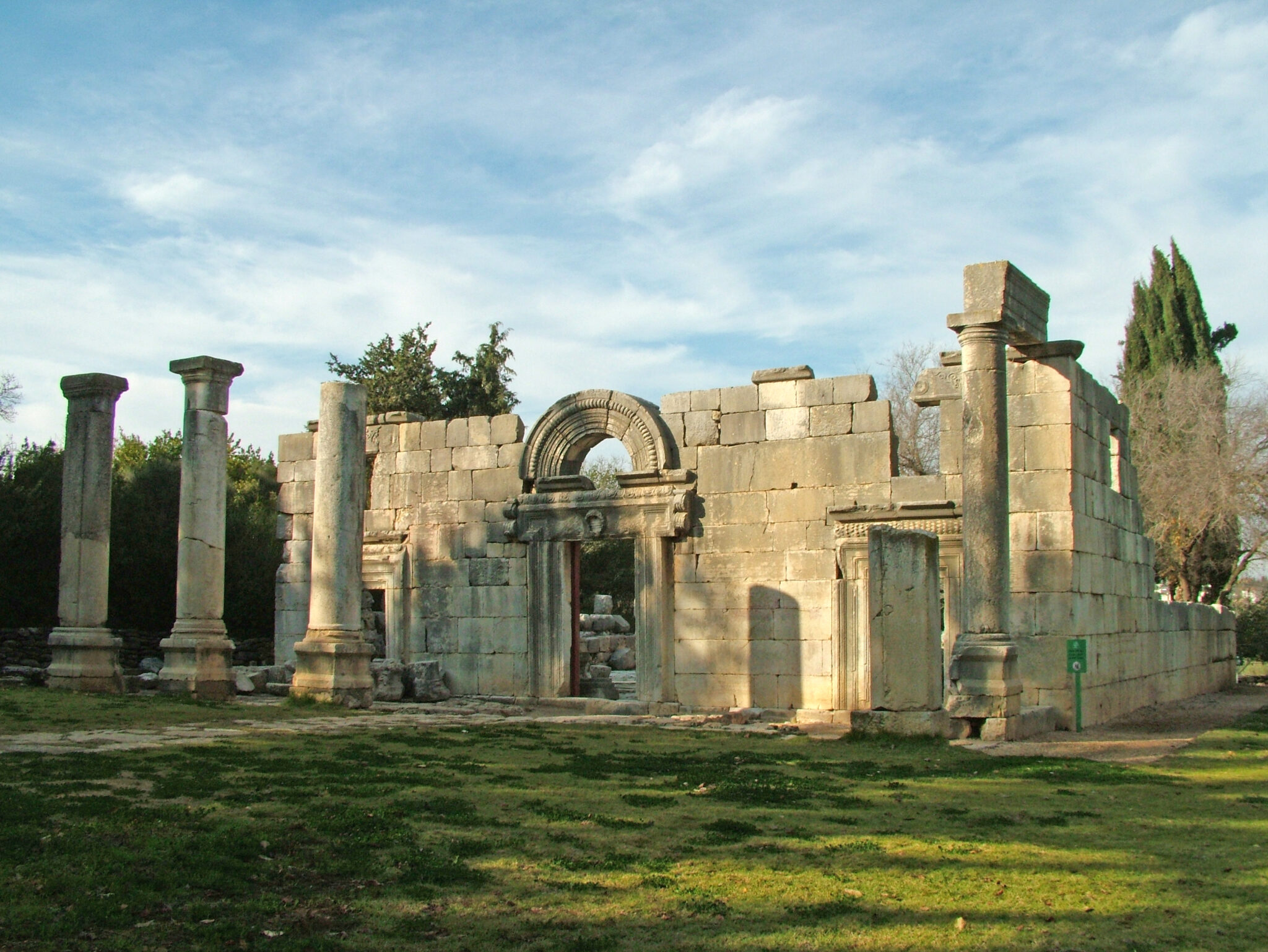It is well-known that one of the Torah’s positive mitzvahs is to read Devarim 25:17-19, or to listen to it being read, and, since this is a d’orayta, it is proper to make sure that this is done with cavanah, with appropriate care to do the right trop, from an undoubtedly kosher Torah scroll, and pronounce every letter correctly (according to your definition). It’s also well known, indeed practically old news, to anyone likely to be reading this that the above is fake. The idea of Parshat Zachor as a fulfilment of the d’orayta mitzvah of Zechirat Amalek is a theory based on a cryptic comment in Tosefos, with no basis in any Hazalic source and clearly contradicted by the earlier rishonim. Whatever the correct interpretation of Tosefos’ passing mention of parshat zachor and parshat parah being d’orayta is, it cannot justify the invention of one of taryag mitzvot out of thin air.
So far so good and since others have proved this point, I shall not dwell on it. Instead, since it has been established what parshat zachor is not, I shall attempt to demonstrate what it is.
Before doing so, it is necessary to dispose of an alternative theory. This theory starts by observing, quite correctly, that parshat zachor is part of a set, the arba’ parshiyot, and that the other three members of this set all have a practical, easy to discern purpose. Parshat Shekalim is read to announce that it will shortly time to donate the shekalim so that they are collected and ready to purchase korbanot before the 1st of Nissan. Parshat Parah is read to announce that those who are tamei met must take the necessary measures to become tahor in time to bring the korban Pesah. Parshat haHodesh is read to announce that Jews must then make the required arrangements to bring the korban Pesah. What these three parshiyot have in common is that they are announcements in advance of performing a mitzvah that, when the temple stood, has to be performed shortly afterwards. It therefore follows that, logically, parshat zachor should be, not the fulfilment of a mitzvah in and of itself, but an announcement in advance of one. The question is, then for what?
According to this theory, the mitzvah that parshat zachor is reminding you to do is the second mitzvah described in the pesukim read, namely to wage a war of extermination against Amalek. This theory hinges on the idea that Amalek is still around, which hinges on a diyyuk made on the Rambam by the Brisker Rov. After describing the mitzvah to exterminate the seven Canaanite nations, the Rambam stops to note that this mitzvah is now, and for perpetuity, theoretical, because the seven nations no longer exist. However, after detailing the mitzvah to exterminate the Amalek, the Rambam makes no such stipulation, possibly indicating that Amalek does exist. Since, plainly, there has not for a long time been any nation that goes by the name Amalek, the claim that Amalek is still with us raises the question of where, exactly, to which the answer given is that any nation which wants to destroy us is Amalek. The answer to the problem is, therefore, that Parshat Zachor is read to remind us to go to Jenin (or maybe Tehran) and kill everyone.
It’s not entirely clear to me how seriously those who call for a war against Amalek take their own rhetoric, which would imply not just killing everyone and their babies in Jenin, but their house pets too. If, as generally seems to me the case, what they actually want is to play offence instead of defence, and pay less attention to civilian casualties, then the Torah’s laws of war against run-of-the-mill-not-Amalek enemies, seem sufficiently robust, without recourse to hints that may or may not be there in the Mishne Torah. Be that as it may, however, there is a more mundane issue with the theory, namely why this mitzvah and why the second week of Adar? It does not seem reasonable that, out of all the mitzvot that have no fixed date, Hazal would have thought it necessary to create a fixed reminder for this one just before Purim. Only if there is no other plausible candidate mitzvah for parshat zachor to precede should we resort to the claim that Parshat Zachor is a prompt to go all Baruch Goldstein. Luckily, there is: in Parshat Zachor we read about, not one, but two mitzvot.
The mainstream theory of Parshat Zachor is that it is a fulfillment of the mitzvah of Zechirat Amalek; the alternative theory is that it is a preparation for the mitzvah of Mehiyat Amalek. I propose a simple triangulation: it is a preparation for Zechirat Amalek.
How this could be so starts to become clear if we read carefully what the Rambam has to say about the mitzvah of Zechirat Amalek.

The mitzvah of Zechirat Amalek cannot be fulfilled only by remembering in the heart, but has to be vocalised in such a way as to ‘arouse souls with speeches’. We have to speak about the deeds of Amalek in order to arouse our hatred of him. The problem with this is that we don’t actually know very much about Amalek’s deeds beyond a few pesukim in the Torah because they have been lost to history. One might say that we did a good enough job of Mehiyat Amalek that we made fulfilling Zechirat Amalek quite a tricky proposition. However, if we turn to Rambam’s source (B. Megilah 18a) 1for the obligation to talk about Amalek, we see something interesting:

The Gemara asks the question how we know that the Megilah must be read from a scroll and not recited (even partially) by heart. It answers this through a gezeirah shava from the instruction given to Moshe Rabbeinu to write down what Amalek did in a sefer. Just as that mitzvah was done from a scroll, so must the Megilah be recited from a scroll. The Gemara, however, questions the premise for the gezeirah shava: how do we know in the first place that this scroll was read? The answer is that the Torah expresses the command to remember Amalek twice in different words. From the instruction ‘don’t forget’ we know that we must remember Amalek, therefore the word ‘remember’ comes to teach something additional: namely that it has to be verbalised.
A certain connection here has been created between כתוב זאת זכרון בספר and the reading of the Megilah, and that connection is made more explicit in another passage in the same tractate (7a):

The identity of the sefer that Moshe Rabbeinu wrote and transmitted to Yehoshua is subject to dispute. The most convincing, I think, is that it refers not to anything in the Torah itself, but either another known book, or, simply, as Shadal explains, to the a physical scroll upon which Moshe Rabbeinu wrote about Amalek. However, even according to the mefarshim who explain that this refers to Moshe writing parshat zachor, it is still undeniably true that an effective remembrance of Amalek must have entailed material beyond what is recorded in the Torah, a sort of Torah she’b’al peh of Amalek if you will. Whether that material was recorded orally or in writing, it has clearly been lost.
If we put all this information together, however, we see that Hazal’s answer to the problem of how one can effectively fulfil the mitzvah of zechirat Amalek b‘peh is to read the Megilah.
The connection between Megilat Esther and the concept of Amalek is clearly established in the Megilah itself. Regardless of how literally one chooses to read the description of Haman as a descendant of Agag, the message entailed is clear enough, and numerous other details are presented and arranged to set up the confrontation between Mordechai and Haman as a recapitulation of King Shaul’s war against Amalek, except this time with no room left for unfinished business. The incorporation of the Megilah into the canon of sacred texts, and the stipulation that it be read once a year, then, allows us to continue to fulfil the mitzvah of verbally describing Amalek’s war against us, in detail and at length, long after our knowledge of the earlier ethnic group was forgotten.
We are now then in a position to state clearly what the purpose of Parashat Zachor is: an announcement that the following week is Purim.
It might here be asked why it is more important to have an announcement of Purim when no such announcement is made before other festivals. The premise of the question is not necessarily correct. Pesach has a special reading, albeit at a remove of a fortnight to give enough leeway for preparations. The Talmud Bavli also stipulates special readings before Shavuot and Rosh haShanah, and the latter may be said to serve also for Yom Kippur and Sukkot that follow shortly afterwards. There is, though, in any case, an intuitive reason why Hazal would want to institute a special reading before Purim.
Purim is, as is often remarked, quite different to other Jewish festivals, in its character and origin. We know from various passages in the gemara that is was a controversial one for some time, and we also know that the Qumran sect did not practice it at all. Such a festival would likely need more official Rabbinical backing than others. More than all that that, however, Parshat Zachor would have achieved more than merely announcing Purim, it would have made a statement about what Purim was and it what it was supposed to achieve.
We have no Mesechet Purim, but rather a Mesechet Megilah. Matanyot la’Evyonim are mentioned only briefly in Tannaitic sources, and the other mitzvot of Purim, not at all. They receive only slightly more discussion in the two talmudim. By contrast, the mitzvah of reading the Megilah is treated at great length, and its importance subsumes the rest of the festival to the extent that, when circumstances of geography or time dictate, it may even be fulfilled on other days. The function of Parshat Zachor is to send a message about what you should be doing the following week, namely reading the Megilah, and what that achieves, namely fulfilling, as best we can under the circumstances, the mitzvah to verbalise our memory of Amalek and his deeds.



Leave a Reply